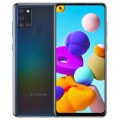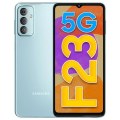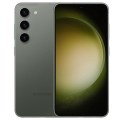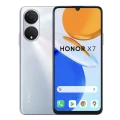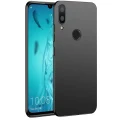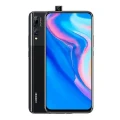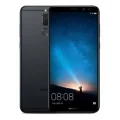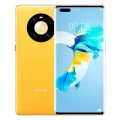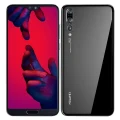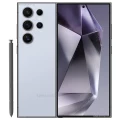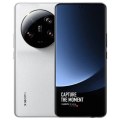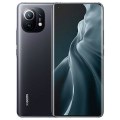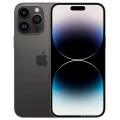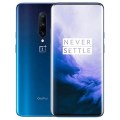- Awesome page
- Latest Mobile
- Smartphones
- Samsung Galaxy M13
Samsung Galaxy M13
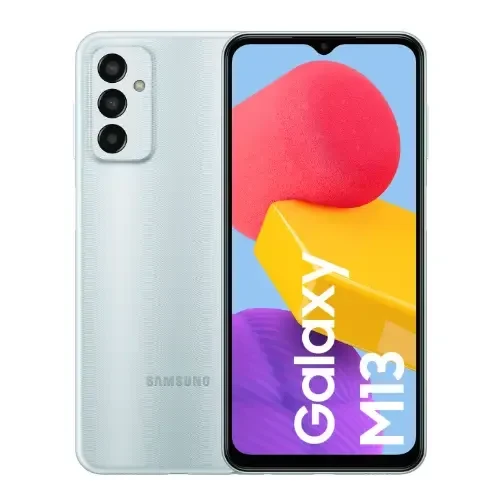


Samsung Galaxy M13 Price in Bangladesh
The Samsung Galaxy M13 is available in two variants: 64GB/4GB RAM and 128GB/4GB RAM. The current price of the Galaxy M13 is 14,500 Taka in Bangladesh.
This smartphone is powered by the Exynos 850 (8nm) chipset and runs on Android 12, ensuring smooth and efficient performance.
The device features a 5000mAh battery with 15W fast charging, providing excellent battery life for extended usage.
Whether you’re looking for a dependable daily driver or an affordable device with good specs, the Samsung Galaxy M13 delivers solid value in its price range.
Specifications
General
| Model | Samsung Galaxy M13 |
| Announced | 27-05-2022 |
| Status | Available |
| Official price | 14500 |
| Unofficial price | 4GB 64GB ৳14,500 |
Design
| Dimensions | 165.4 x 76.9 x 8.4 mm (6.51 x 3.03 x 0.33 in) |
| Weight | 192 g (7.48 oz) |
| Colors |
Deep Green, Orange Copper, Light Blue |
Network
| Technology | GSM / HSPA / LTE |
| 2G Network |
GSM 850 / 900 / 1800 / 1900 - SIM 1 & SIM 2 |
| 3G Network |
HSDPA 850 / 900 / 1700(AWS) / 1900 / 2100 |
| 4G Network |
1, 2, 3, 4, 5, 7, 8, 12, 17, 20, 26, 28, 38, 40, 41, 66 |
| GPRS <strong>GPRS</strong> (General Packet Radio Service) is a packet oriented mobile data service on the 2G and 3G cellular communication system's global system for mobile communications (GSM), Generally, GPRS is used for the purpose of wireless data transfer, such as sharing pictures and videos or browsing the Internet via a mobile phone connection. | |
| EDGE <strong>EDGE</strong> (Enhanced Data GSM Environment) is a wireless network technology generally considered the next step in the 2G network offers data transfer rates up to four times faster than ordinary GSM networks, Generally, EDGE is used for the purpose of wireless data transfer, such as sharing pictures and videos or browsing the Internet via a mobile phone connection. | |
| Speed | HSPA 42.2/5.76 Mbps, LTE-A |
Display
| Display Type <strong>Display Technology => </strong> A number of display technologies and types used in mobile phones => TFT (Thin Film Transistor), IPS (In-Place Switching), OLED (Organic Light Emitting Diode), AMOLED (Active-Matrix Organic Light-Emitting Diode), Super AMOLED (an even advanced version of AMOLED), Resistive Touchscreen (Resistive touchscreens contain two layer of conductive material with a very small gap between them which acts as a resistance), Capacitive Touchsceen (Capacitive touchscreen technology consists of a layer of glass coated with a transparent conductor) | PLS IPS capacitive touchscreen, 16M colors |
| Size | 6.6 inches, 105.2 cm2 (~82.7% screen-to-body ratio) |
| Resolution | 1080 x 2408 pixels, 20:9 ratio (~400 ppi density) |
Camera
Main camera
| Camera Setup | Triple |
| Primary <strong>Camera</strong> is able to capture photographs and usually videos, The most important characteristics of a camera are the resolution (measured in megapixels), lens focus type (fixed or automatic), higher megapixel cameras are known to capture higher quality photos, but not always a good measurement of the photos quality. |
50 MP, f/1.8, (wide), PDAF 5 MP, f/2.2, 123˚ (ultrawide) 2 MP, f/2.4, (depth) |
| Features |
LED flash, panorama, HDR |
| Video | 1080p@30fps |
Selfie camera
| Camera Setup | Single |
| Primary <strong>Camera</strong> is able to capture photographs and usually videos, The most important characteristics of a camera are the resolution (measured in megapixels), lens focus type (fixed or automatic), higher megapixel cameras are known to capture higher quality photos, but not always a good measurement of the photos quality. |
8 MP, f/2.2, (wide) |
| Features |
HDR |
| Video | 1080p@30fps |
Hardware
| Chipset <strong>Chipset</strong> is a group of integrated circuits designed to perform one or a more dedicated functions, often with real time computing constraints, Popular smartphones are equipped with more advanced embedded chipsets that can do many different tasks depending on their programming. | Exynos 850 (8nm) |
| CPU <strong>CPU</strong> (Central Processing Unit) mostly known as processors, CPU processes instructions in order to carry out certain functions that make your device operate properly. Processors are often described as the brain of computers, smartphones and tablets, Smartphones and tablets rely on processors to carry out their every task, Processors are an incredibly important factor in selecting any type of computing device, including your smartphone. | Octa-core (4x2.0 GHz Cortex-A55 & 4x2.0 GHz Cortex-A55) |
| GPU <strong>GPU</strong> (Graphics Processing Unit) is a single-chip processor designed to rapidly manipulate and alter memory to accelerate the creation of images in a frame buffer intended for output to a display, This includes things such as lighting effects, object transformations, and 3D motion. | Mali-G52 |
| RAM (Memory) <strong>RAM</strong> (Random Access Memory) is a type of computer memory that can be accessed randomly, any byte of memory can be accessed without touching the preceding bytes that allows information to be stored and accessed quickly from random locations. RAM is the most common type of memory found in computer systems, smartphones, tablets and other electronic devices. | 4 GB |
| Internal Storage <strong>Internal Storage</strong> is a data storage space (flash memory) mostly used in smartphones, tablets and other electronic devices where operating system, apps, music, photos, videos, files and other user data Is stored. | 64/128 GB eMMC 5.1 |
| Sensors <strong>Sensors</strong> are electronic components that detects and responds to some type of input from the physical environment. The specific input could be light, heat, motion, moisture, pressure and location, The output is generally a signal that is converted to use in computing systems, a location sensor, such as a GPS receiver is able to detect current location of your electronic device. |
Fingerprint (side-mounted), accelerometer, compass Virtual proximity sensing |
Connectivity
| Bluetooth <strong>Bluetooth</strong> is a wireless communications technology for exchanging data between mobile phones, headsets, computers and other network devices over short distances without wires, Bluetooth technology was primarily designed to support simple wireless networking of personal consumer devices. | 5.0, A2DP, LE |
| Infrared <strong>Infrared</strong> connectivity is an old wireless technology used to connect two electronic devices. It uses a beam of infrared light to transmit information and so requires direct line of sight and operates only at close range. | |
| USB | USB Type-C 2.0 |
| GPS <strong>GPS</strong> The Global Positioning System is a satellite-based radio navigation system, GPS permits users to determine their position, velocity and the time 24 hours a day, in all weather, anywhere in the world, In order to locate your position, your device or GPS receiver must have a clear view of the sky. | Yes, with A-GPS, GLONASS, GALILEO, BDS |
| NFC <strong>NFC</strong> (Near field communication) is a set of standards for smartphones and similar devices to establish peer-to-peer radio communications with each other by touching them together or bringing them into proximity, usually no more than a few inches. |
Battery
| Battery Type <strong>Battery Type => </strong> Cell phones run on various kinds of batteries depending on the manufacturer, phone size or shape and features. There are basically four types of cell phone batteries => Lithium Polymer, Lithium Ion, Nickel Metal Hydride and Nickel Cadmium. | Non-Removable Li-Po |
| Capacity <strong>Battery Capacity</strong> is a measure (typically in Amp-hr) of the charge stored by the battery, and is determined by the mass of active material contained in the battery. The battery capacity represents the maximum amount of energy that can be extracted from the battery under certain conditions. | 5000 mAh |
| Charging Charging | Fast charging 15W |
Samsung Galaxy M13 Review: Affordable, Reliable, and Perfect for Everyday Use
Samsung is renowned for offering smartphones that cater to a wide array of users, and the Samsung Galaxy M13 is no exception. Designed for those who want a dependable smartphone without stretching their budget, the Galaxy M13 provides a balanced mix of design, performance, and functionality. Whether you’re a tech enthusiast keen on exploring its performance metrics or a Samsung fan wondering how it stacks up in the market, this review covers everything you need to know about the Galaxy M13 and helps you decide if it’s the right fit for your needs.
Design and Build Quality
For an entry-level smartphone, the Samsung Galaxy M13 doesn’t skimp on design. With its understated look, it fits snugly in the hand and exudes a sense of simplicity and sophistication.
- Materials and Finish:
The Galaxy M13 features a polycarbonate back, which is not only lightweight but also resistant to wear and tear. While it might lack the premium feel of glass or metal designs, the matte finish does a good job of repelling fingerprints and smudges.
- Ergonomics:
At 192g and with a thickness of 8.4mm, the phone strikes a decent balance between size and portability. Its rounded edges and slim profile make it comfortable to hold during extended use, whether you’re scrolling or playing games. The button placements are intuitive, and the power button, which doubles as a fingerprint scanner, is quick and responsive.
Overall, while the Galaxy M13 is clearly a budget phone in its materials, Samsung’s design language ensures it still feels sturdy and looks modern.
Display and Audio
The Samsung Galaxy M13 boasts a 6.6-inch PLS LCD display, which is great for consuming media on a budget-friendly device.
- Resolution and Brightness:
The screen offers a Full HD+ resolution (1080 x 2408 pixels), delivering crisp and clear visuals for everyday users. Whether browsing photos or bingeing on your favorite TV shows, the display manages to produce rich colors, albeit with slightly muted vibrancy when viewed at certain angles. With its 400 nits of brightness, outdoor visibility is adequate, but direct sunlight can occasionally be a challenge.
- Audio Performance:
Equipped with a single bottom-firing speaker, the audio quality is decent for its price. The output is clear enough for calls and casual listening, but don’t expect immersive sound for music or videos without external speakers or headphones. Thankfully, the Galaxy M13 still includes a 3.5mm headphone jack, allowing you to easily connect wired headphones for an improved audio experience.
While the display and audio might not compete with flagship models, the Galaxy M13 performs admirably within its price segment, offering an enjoyable day-to-day multimedia experience.
Performance
Under the hood, the Samsung Galaxy M13 is powered by the Exynos 850 chipset, paired with 4GB of RAM and offering storage options of either 64GB or 128GB.
- Everyday Use:
The Exynos 850 delivers solid performance for tasks like web browsing, social media, and light multitasking. Apps launch fairly quickly, and navigation through the UI feels smooth for typical usage scenarios.
- Gaming:
If you’re into gaming, the Galaxy M13 is capable of running casual games such as Among Us or Candy Crush without a hitch. However, more graphically intensive titles like PUBG Mobile will require reduced settings to achieve a playable experience without noticeable frame drops.
While the performance isn’t groundbreaking, it’s reliable enough for users who prioritize basic functionality over high-powered features.
Camera Quality
The Samsung Galaxy M13 sports a triple-camera setup featuring a 50MP primary sensor, a 5MP ultra-wide lens, and a 2MP depth sensor.
- Photo Performance:
The primary camera excels in daylight photography, capturing sharp images with good detail and natural colors. However, low-light conditions can cause noticeable grain and dullness due to the lack of optical image stabilization (OIS).
The ultra-wide lens is a nice addition, allowing you to take expansive photos like landscapes or group shots, though the overall quality slightly drops compared to the main lens. The 2MP depth sensor enables decent portrait shots with adequate subject-background separation.
- Selfies and Video:
The 8MP front-facing camera is serviceable for casual selfies and video calls. Videos max out at 1080p at 30fps, which is acceptable for an entry-level smartphone.
While the camera isn’t designed for professional photographers, it’s plenty capable for everyday use, especially in well-lit settings.
Battery Life and Charging
With its large 5000mAh battery, the Samsung Galaxy M13 is a workhorse when it comes to battery life.
- Endurance:
On a single charge, you can confidently get a full day’s use, even with moderate to heavy activities like video streaming, social media usage, and navigation. Lighter use can stretch this to nearly two days without reaching for the charger.
- Charging:
The 15W fast charging is modest, taking approximately two hours to fully recharge the battery. While not the fastest in the market, it’s adequate for a phone in this segment.
For most users, the Galaxy M13’s battery will be one of its standout features.
Software and User Interface
The Galaxy M13 runs on Android 12 with Samsung’s One UI Core 4.1, offering a clean and user-friendly experience.
- Custom Samsung Features:
One UI Core 4.1 simplifies the interface, prioritizing ease of use and customization. It includes several useful tools like Samsung Pay, secure folder, and gesture controls.
- Future Updates:
While Android 12 comes pre-installed, Samsung has committed to regular security updates for the Galaxy M series, ensuring the phone remains secure and functional over its lifespan.
The software is intuitive and attractive, making it a pleasure to use for both new and seasoned smartphone users.
Value for Money
Priced at 14,500 BDT in Bangladesh, the Samsung Galaxy M13 positions itself as a compelling option for budget-conscious buyers. When compared to competitors like the Redmi 10 or Realme C25Y, the Galaxy M13 holds its own with a better camera setup and Samsung’s reliable brand quality.
For those who prioritize a dependable, long-lasting device for everyday use, the Galaxy M13 offers excellent value for money.
Should You Buy the Samsung Galaxy M13?
The Samsung Galaxy M13 provides exactly what it promises—dependable performance, a polished design, and the backing of a trusted brand. It’s an ideal choice for casual users who need a smartphone for essential tasks like communication, light browsing, and casual gaming.
However, if you’re seeking higher performance levels or flagship-level photography, you might want to explore other options at a higher price point. For its segment, the Galaxy M13 is a solid contender that offers significant return on investment.
